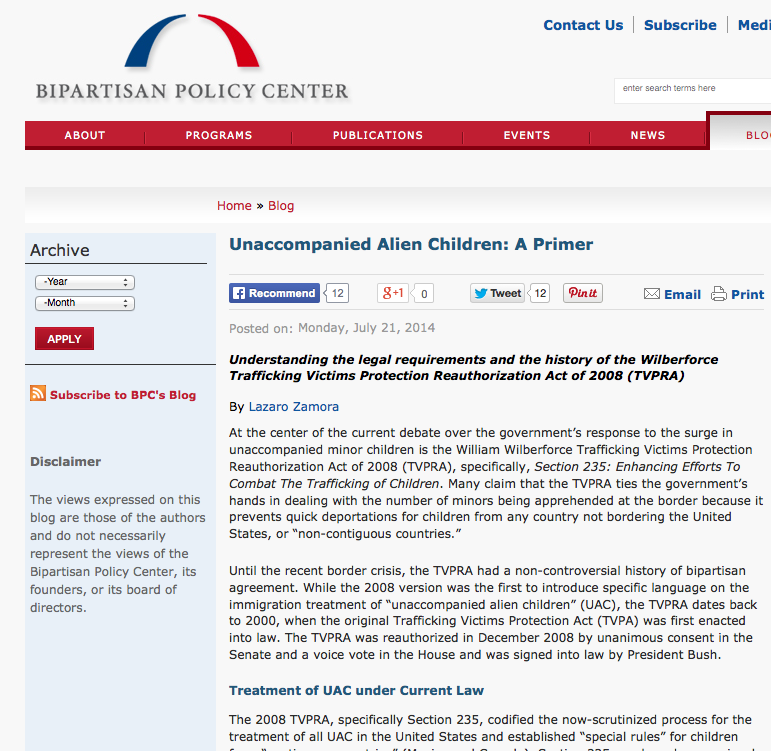The Bipartisan Policy Center has a Primer on Unaccompanied Alien Children, published on July 21, 2014, by Lazaro Zamora. It gives an overview of what laws apply to these children, what the process they go through, and how new proposals to federal legislation may change them.
Understanding the legal requirements and the history of the Wilberforce Trafficking Victims Protection Reauthorization Act of 2008 (TVPRA)
At the center of the current debate over the government’s response to the surge in unaccompanied minor children is the William Wilberforce Trafficking Victims Protection Reauthorization Act of 2008 (TVPRA), specifically, Section 235: Enhancing Efforts To Combat The Trafficking of Children. Many claim that the TVPRA ties the government’s hands in dealing with the number of minors being apprehended at the border because it prevents quick deportations for children from any country not bordering the United States, or “non-contiguous countries.”
Until the recent border crisis, the TVPRA had a non-controversial history of bipartisan agreement. While the 2008 version was the first to introduce specific language on the immigration treatment of “unaccompanied alien children” (UAC), the TVPRA dates back to 2000, when the original Trafficking Victims Protection Act (TVPA) was first enacted into law. The TVPRA was reauthorized in December 2008 by unanimous consent in the Senate and a voice vote in the House and was signed into law by President Bush.
The rest of the primer is here — it’s a great quick walk-through.



